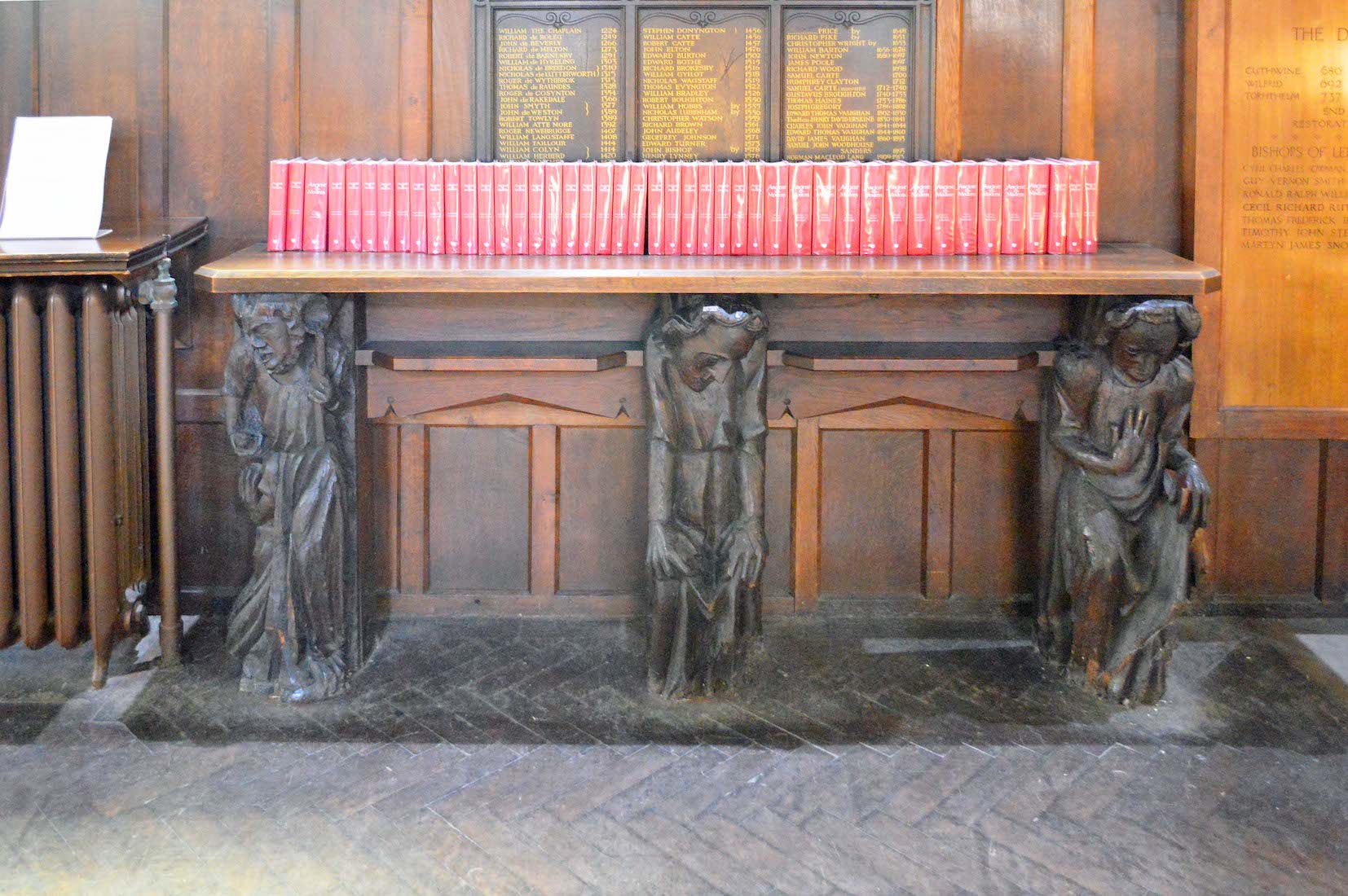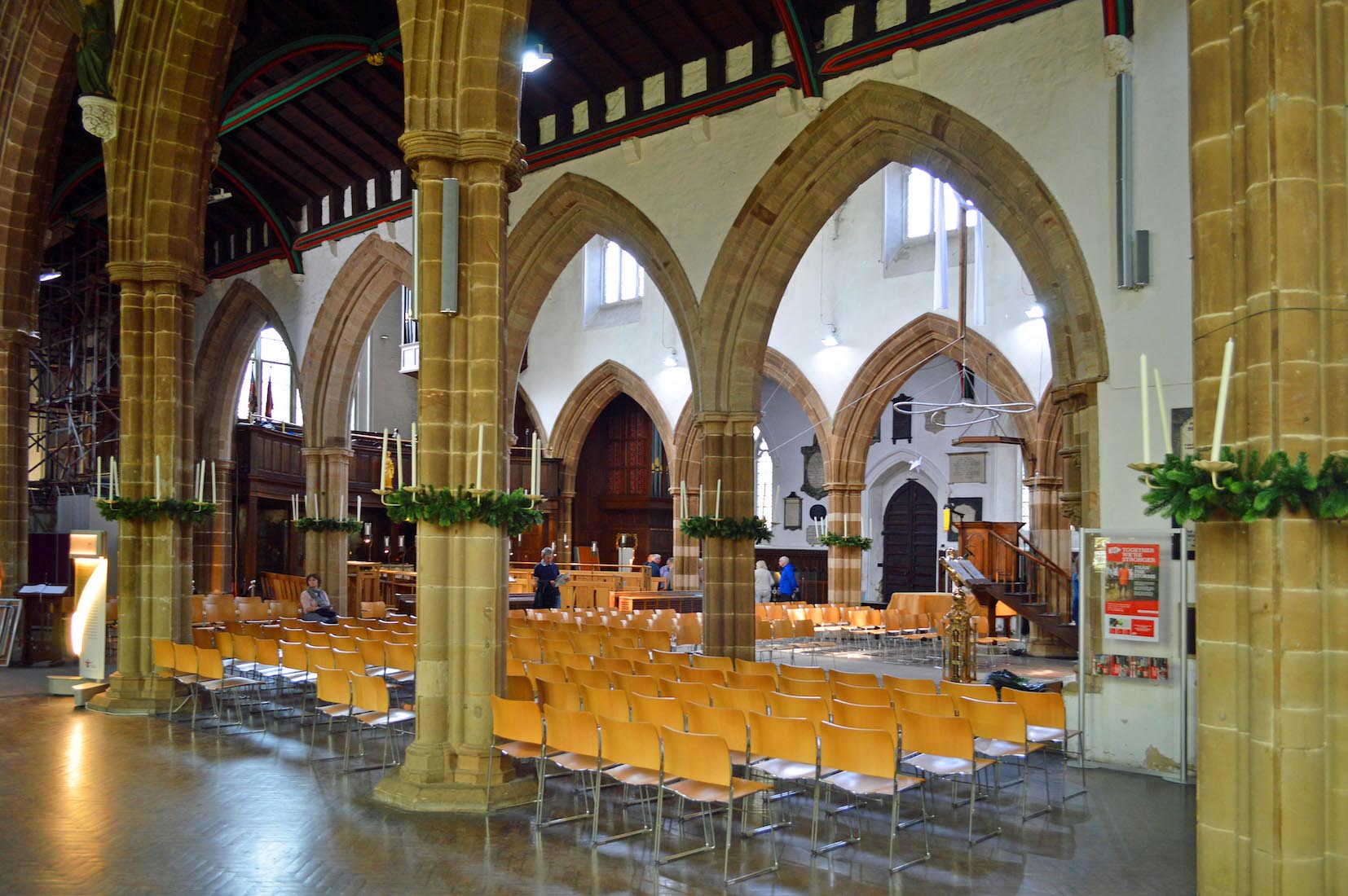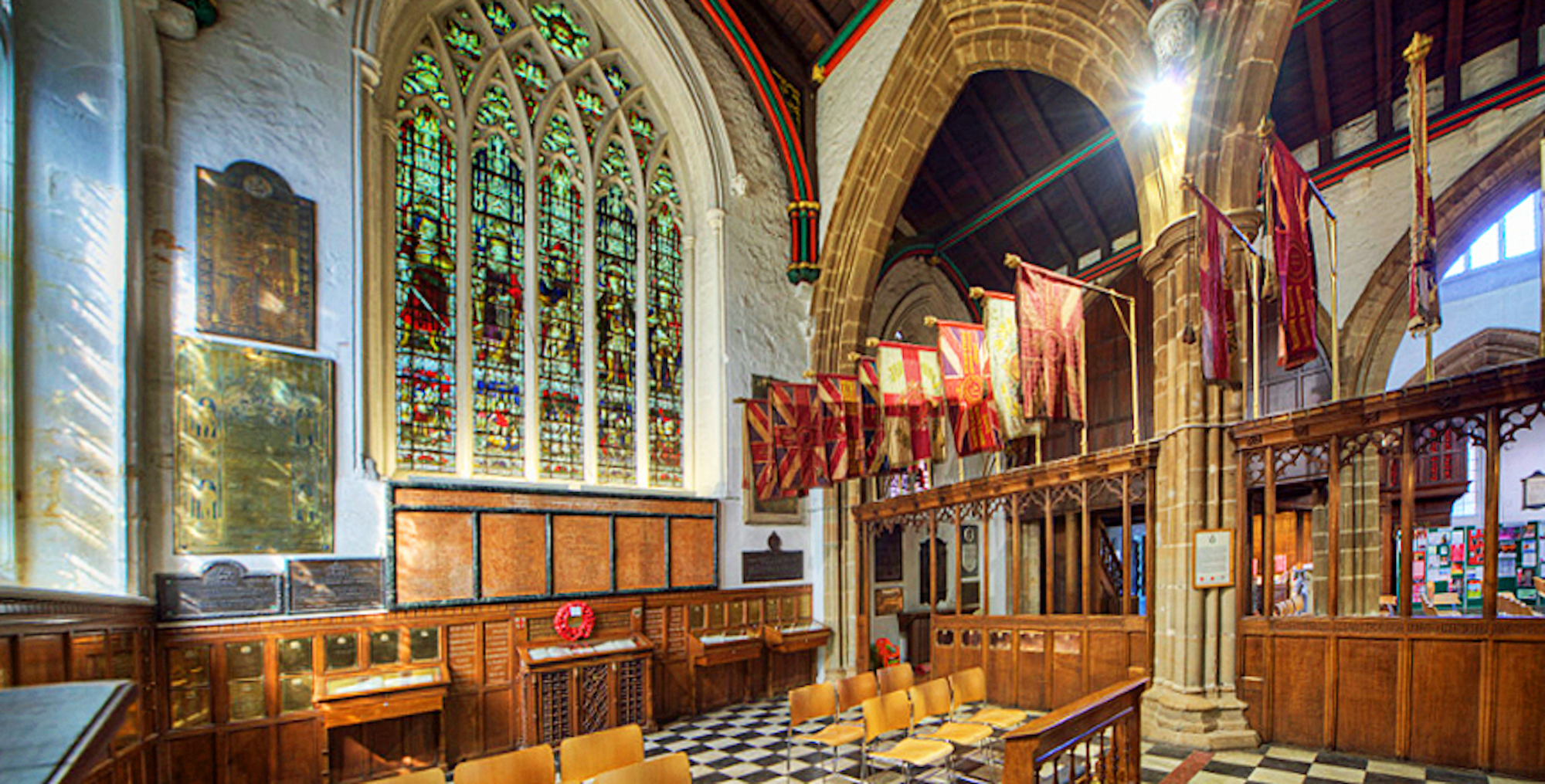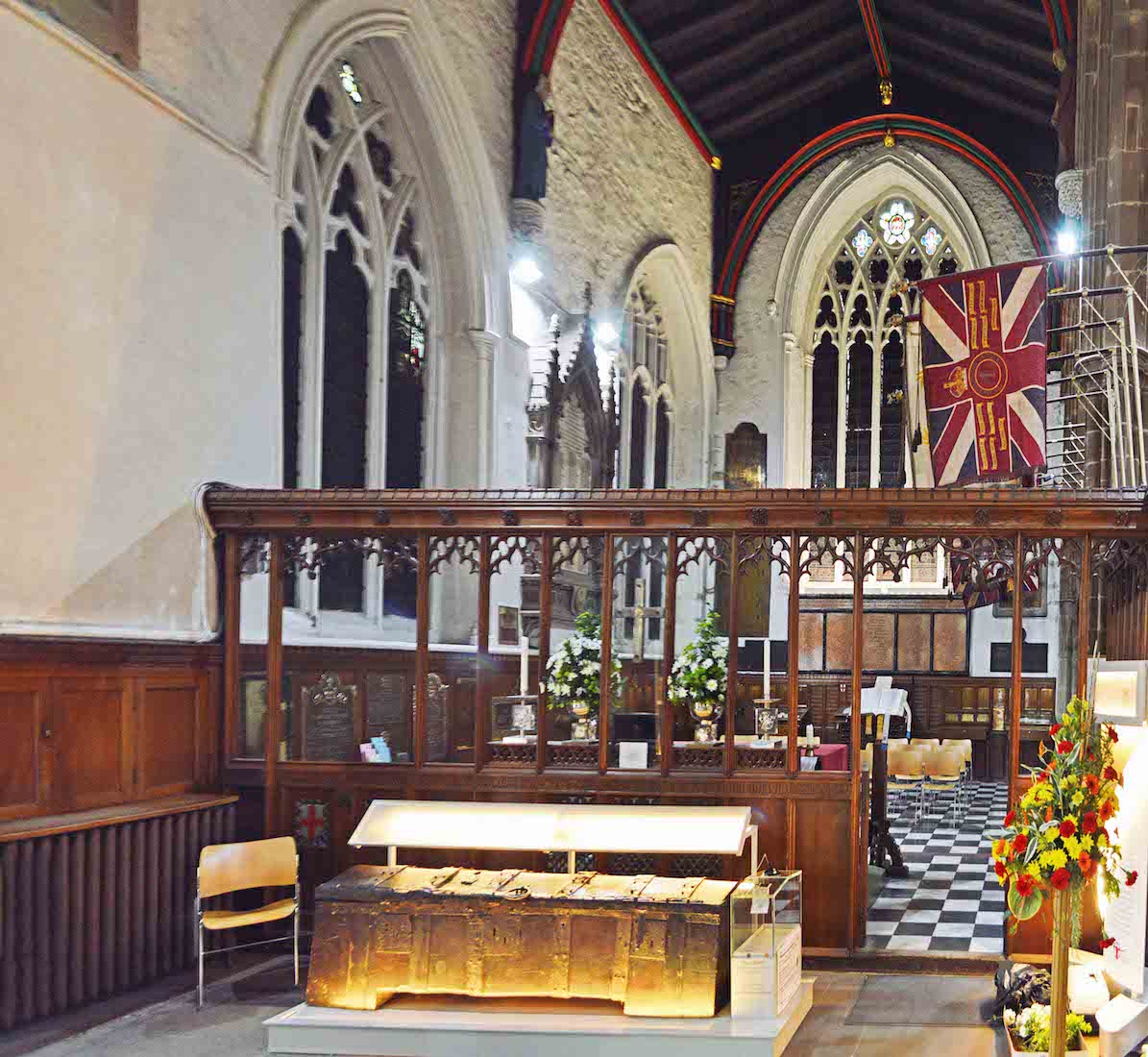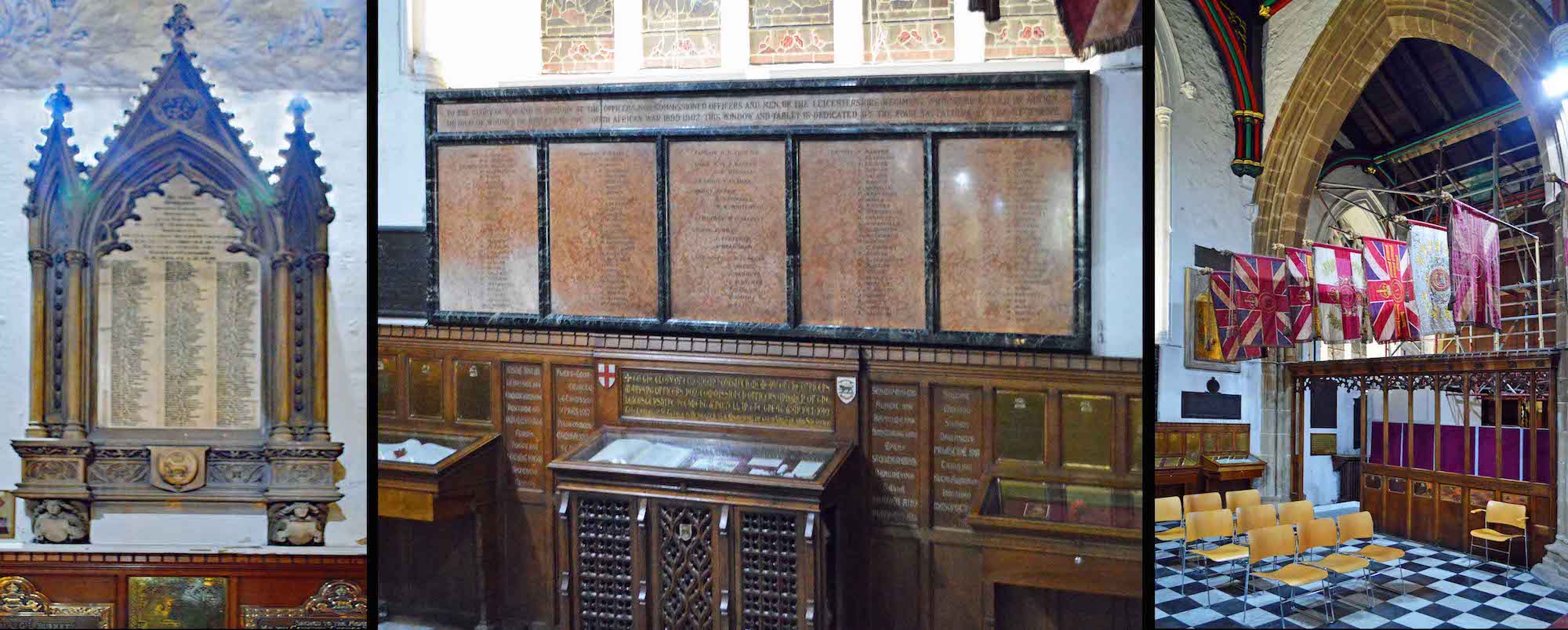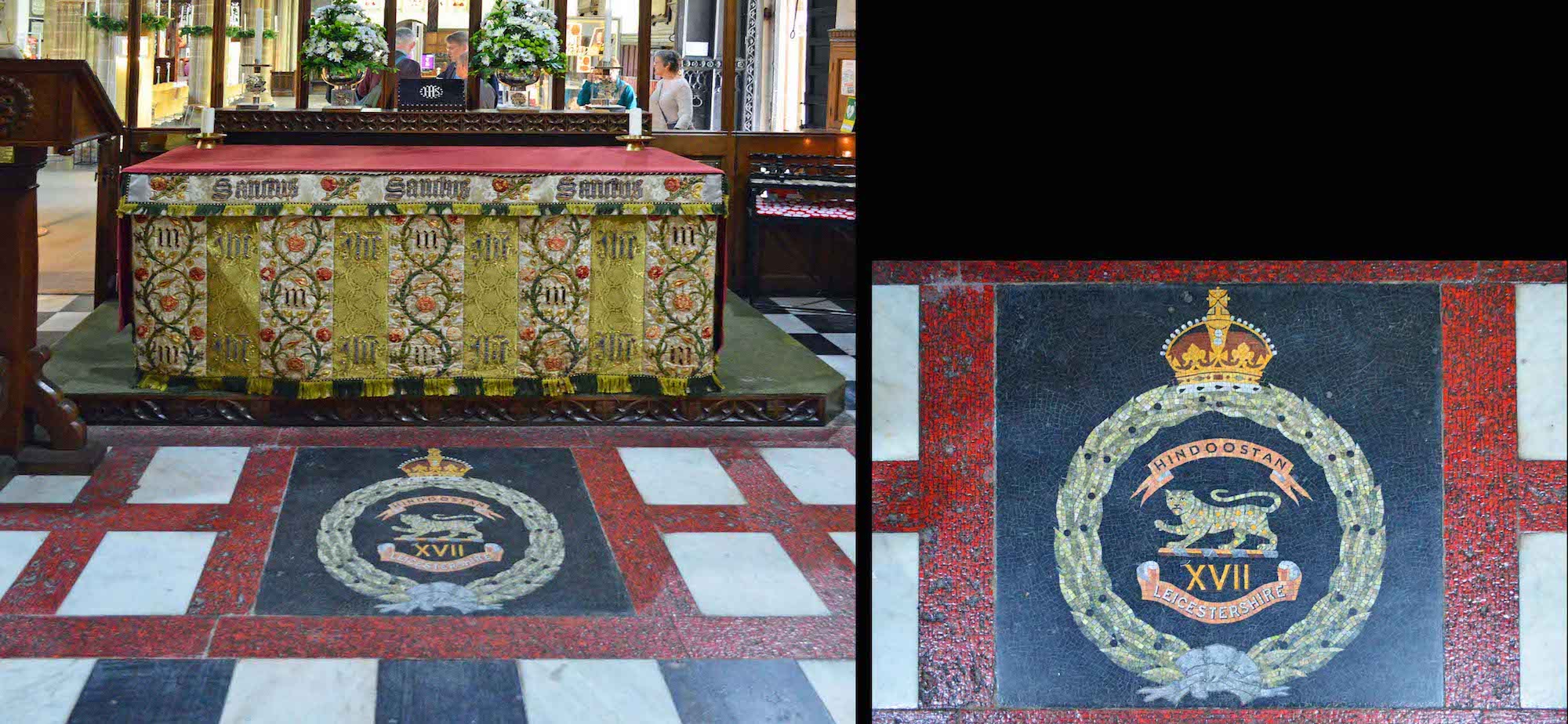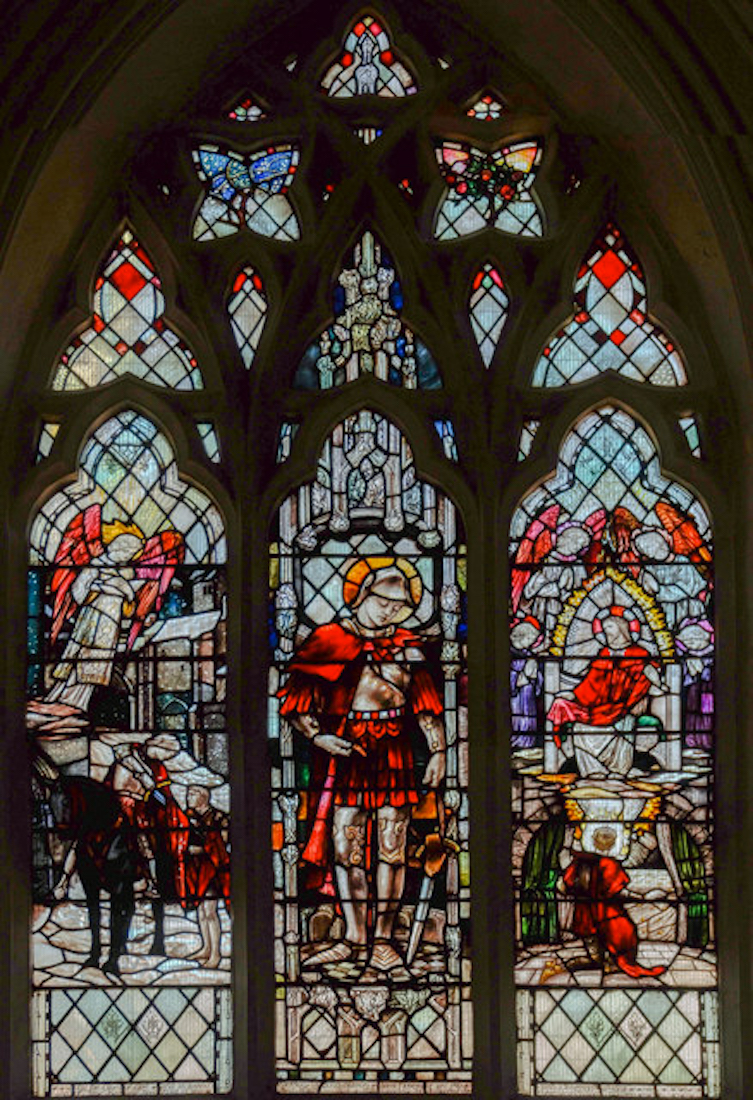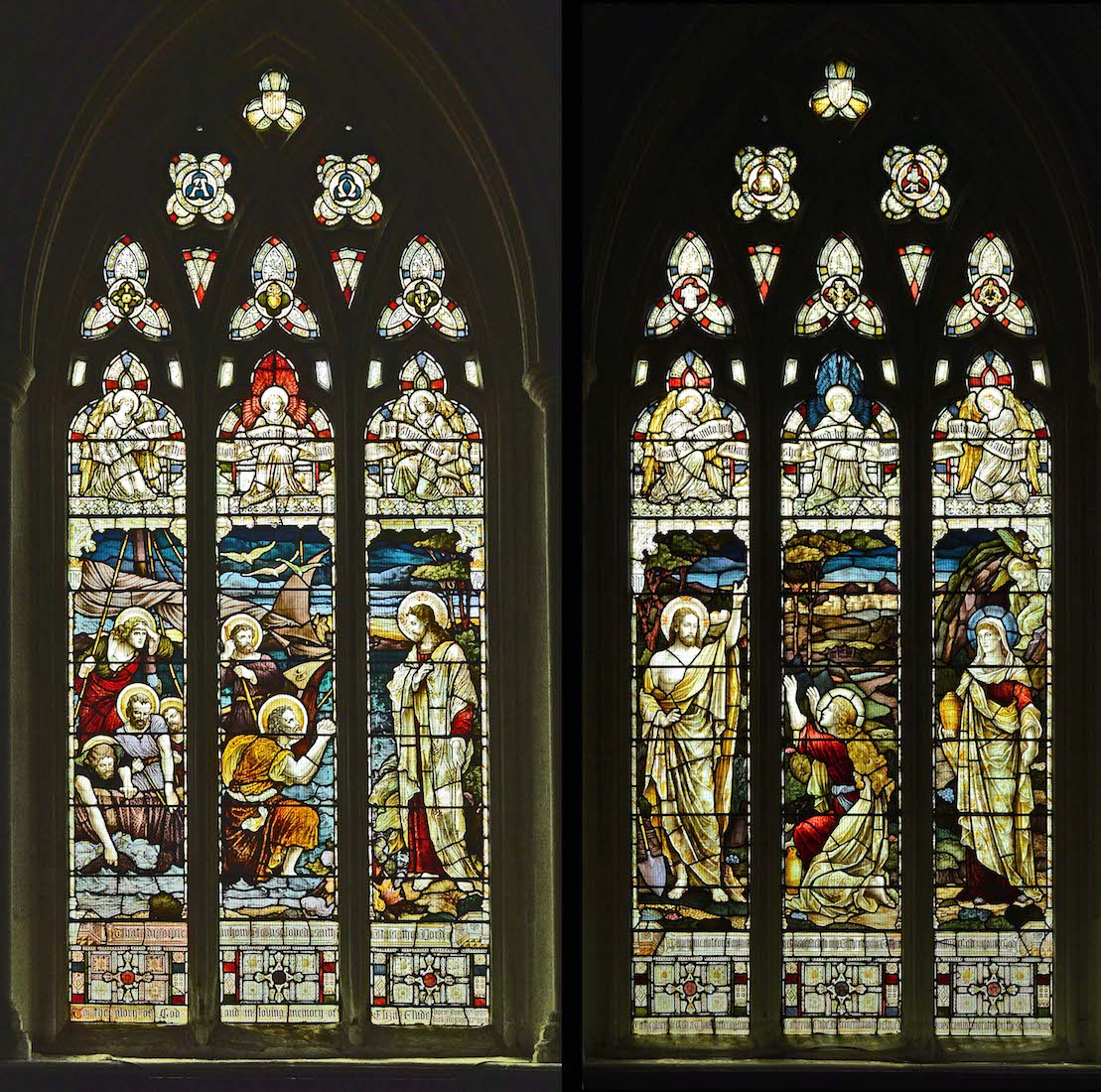
The two remaining windows on this wall depict two events from the life of Christ. The left window shows Jesus walking on the water. The text reads: ‘That disciple whom Jesus loved saith ‘It is the Lord’ (Jn 21:7). The right window shows Jesus appearing to Mary Magdalene outside the tomb. The text is: ‘Touch me not for I am not yet ascended to my Father and your Father, to my God and your God.’ This is a contraction of Jn 24:17. . PLAN
62. ROYAL VISITS

On the panelling below the last of these windows are two framed notices. At left is a signed record that King George IV and Queen Elizabeth (I) visited the Cathedral on October 30, 1946. At right is a record that in the Year of the Queen’s Diamond Jubilee, there was a visit to Leicester on Thursday 8th March, 2012 by Her Majesty the Queen, accompanied by HRH Philip, The Duke of Edinburgh and HRH Catherine, The Duchess of Cambridge.
63. OLD BOOK SUPPORT
Closer towards the South nave door is this wonderful old shelf stand, used for stacking books. The shelf is supported by three beautifully carved wooden figures showing people with various physical ailments, such as a hunched back. They were presumably meant to remind worshippers that Christ healed the ill and infirm.
64. NAVE VIEWED FROM CHAPEL
As we prepare to leave the Medieval Chapel, we take a look back across the nave. The West balcony is at left, and the pulpit and lectern at right. We finally visit St George’s Chapel and the St Martin window. There were difficulties photographing the Chapel during my visit because of the current Cathedral renovations. In particular, I have been unable to photograph the Chapel windows. St George’s Chapel occupies the Southwest corner of the cathedral.
65. ST GEORGE’S CHAPEL
St George’s Chapel is the regimental chapel for the Royal Tigers, the Leicestershire Regiment which also began the well-known local rugby club. St George’s Chapel was the chapel of the Guild of St George. The effigy of England's national saint, on a horse, was kept here and borne through the streets annually on 23 April in a procession known as ’riding the George’. The legend of George killing a dragon is shown in one of the chapel’s windows. [Photo Credit: Cathedral photo]
66. ANOTHER CHAPEL VIEW
The chapel is separated from the South nave entryway by a carved wooden screen. The chapel was reconstructed in 1921 and contains memorials to the men of the Royal Leicestershire Regiment. Here the battle honours of the Regiment and the names of those killed in the Crimean, South African and two World Wars are recorded and remembered. We observe the Honour rolls on the South (left) wall, and the West wall (straight before us).
67. OLD CHEST
Forming an additional barrier to St George’s Chapel is this early medieval parish chest. It is placed by the nave entrance to encourage donations for the Cathedral.
68. HONOUR ROLLS
The Honour Rolls list the names of the Officers and Men of the Leicestershire Regiment who gave their lives for their country. The regimental colours of various disbanded regiments are still on display..
69. ST GEORGE’S CHAPEL ALTAR
I found St George’s Chapel to be oriented in an unexpected way, with the altar at the East end. A memorial coat of arms is on the floor before the altar. It celebrates the Leicestershire Regiment (Royal Leicestershire Regiment after 1946), which was a line infantry regiment of the British Army with a history going back to 1688. ‘Hindoostan’ was a reference to India.
70. CHAPEL CANDLE AND DISPLAY
This is a War Memorial Chapel, so there are various items on display which recall memorable events of past wars, as well as lost comrades. Close by the St George Chapel is the St Martin’s Window.
71. ST MARTIN’S WINDOW
St Martin is of course the patron saint of this Cathedral. St Martin of Tours (316 or 336 – 397) was the third bishop of Tours. He is best remembered for the legend that one day when he met a scantily clad beggar, he impulsively cut his military cloak in half to share with the man. That night, Martin dreamed of Jesus wearing the half-cloak he had given away. [Photo Credit: Julian P Guffogg]
72. BOOK OF HOURS
King Richard III carried a personal prayer book, a Book of Hours, which helped him pray through the day. The beautifully illustrated original, complete with handwritten margin notes is now in the care of the Lambeth Palace Library in London. A version is available online. The Cathedral has a modern Book of Hours which features work from pupils drawn from over 80 Leicestershire schools. The Cathedral Guide places this in the Medieval Chapel, but during my visit I believe it was in the Northwest nave. [Left Photo Credit: Leicester Cathedral] This competes our tour of Leicester Cathedral.
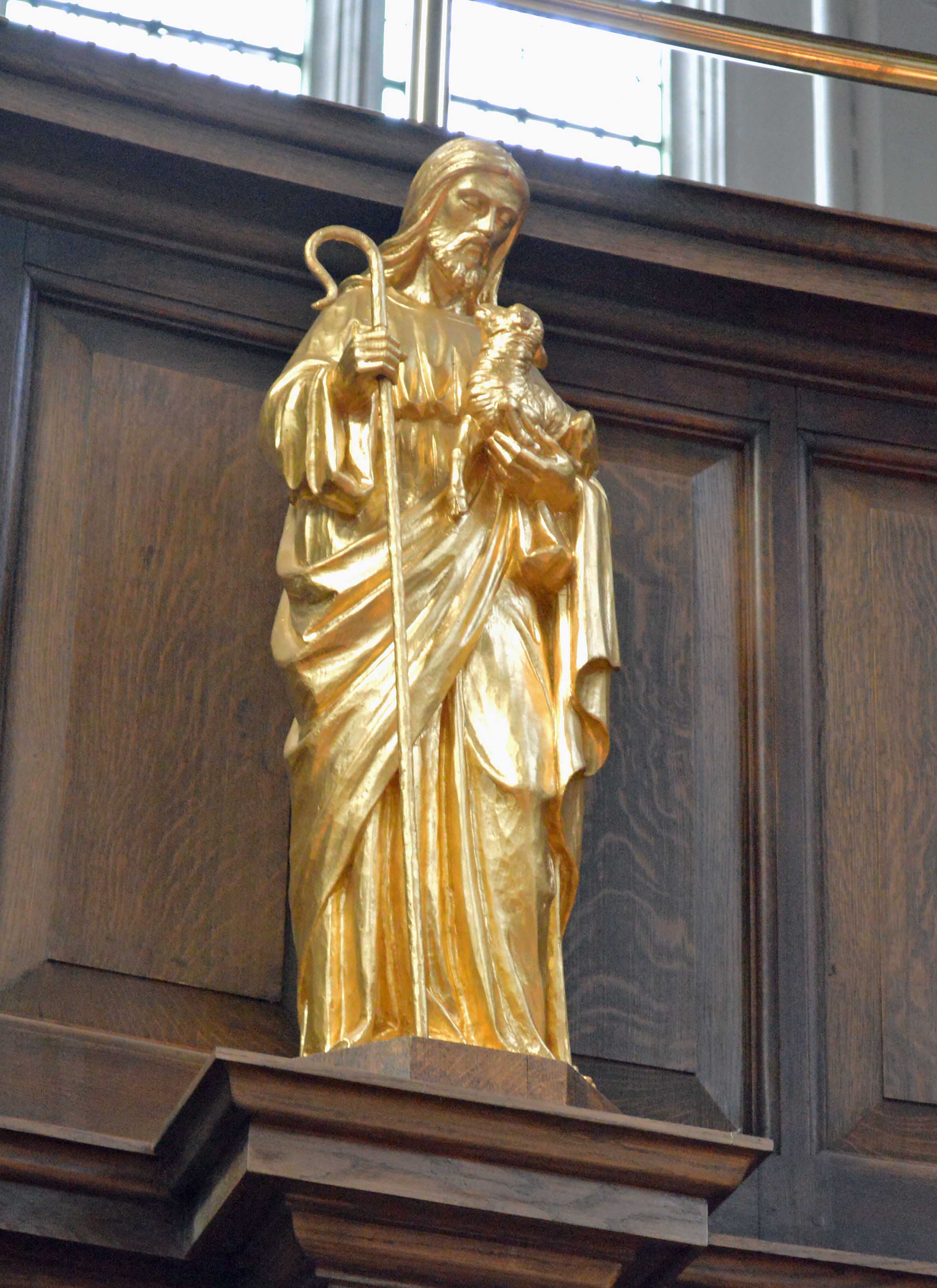
CONCLUSION
I hope you have enjoyed visiting Leicester Cathedral with me. I really enjoyed the stained glass, and then of course there was Richard III!
I am happy to receive constructive comments or corrections concerning this website. The best websites are the ones which have no errors! I am grateful to my wife Margie who has proof-read these pages.
Most of the photographs on this site are mine, but because of building works there are a few (acknowledged) others. However, I take little credit for the text which comes from many sources, including the Cathedral publication ‘A short guide to Leicester Cathedral’, Wikipedia, and the Cathedral website:
http://leicestercathedral.org/
My photographs which appear on this site can also be found in higher resolution at:
https://www.flickr.com/photos/paulscottinfo/albums/
Paul Scott Site created 07 / 2018 reformatted 03 / 2020

